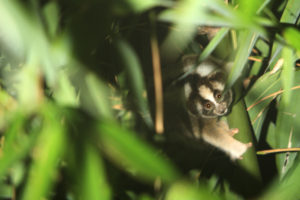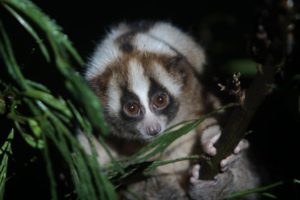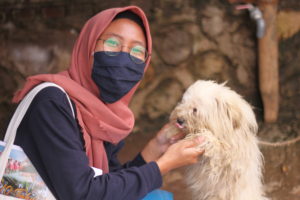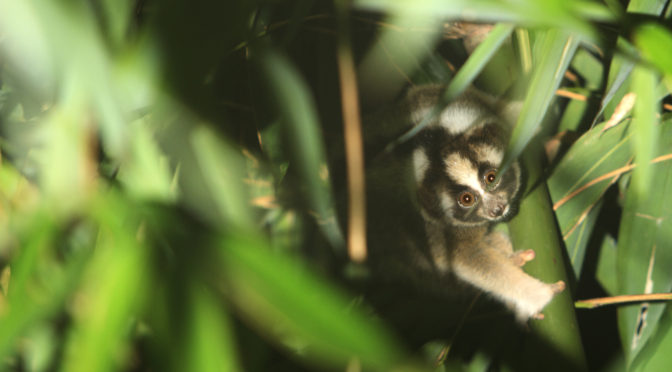Because conservation is for all of us 😊
Primate represents different things to different people. Some we love, some we hate, and some we eat. They may be lucky listed as protected species, but some are hunted as pets, while others ended up as meals. The unique appearance, behaviour, and set of close similarities they share with human are both a blessing and a curse for primates. Likewise the slow loris.

Before I joined LFP, I used to ask myself, “How can venomous primate like slow loris be considered a pet when their single bite can be lethal?”. Then I got the answer immediately on my first behavioural observation… It is simply because their adorable appearance is irresistible! No wonder If this little fluffy creature with their big eyes and button nose may be one of the cutest critters on earth.

Slow loris (Nycticebus spp.), just like other nocturnal prosimians, have a highly reflective layer on the back of their retina called tapetum lucidum cellulosum which means “shinning layer”. This feature is responsible for their glowing red eyes when light is shined directly into them. As their name indicates, slow loris also moves slowly so both of these features make them easy to find by the hunter at night. Sadly, with high demand for illegal wildlife trade, all species of slow loris are now classified between “vulnerable” and “critically endangered” by IUCN.
Slow lorises are cute! But keeping them as a pet is never ever ever a good idea if you know the secret about their venom. It is activated by combining the oil from the brachial arm gland with their saliva. When slow lorises are in danger, they will make defence posture called “venom pose” by raising their arms above the head. This venom can cause a swelling, nauseous, anaphylactic reaction, and even death in humans.
Yup! The bite of slow loris is no joke.

So what can we do to protect slow loris?
My one month experience with LFP open up a new perspective that we always have a million options to support slow loris conservation from the heroic one to the most peculiar way. Doing behavioural observation by following slow loris for 6 hours (from 5 PM-11 PM or 11 PM-5 AM}, building loris bridge to allow them travelling safely above agricultural land, monitoring with a camera trap, sharing knowledge to local villagers, raising awareness to children, doing social media campaign, conducting TikTok research project about slow loris, and maaany more!
The good news is that we don’t need to be a superhero to protect slow loris, because anyone can do anything. While conservationist attempt to preserve their population and habitat, we can make a donation for the organization. Then as a social media user, we can share any information to raise public awareness about slow loris or even reporting wildlife trader account. Or if you are an artist, you can share your artwork like story, photo, painting, poem, song, video, and others about slow loris. Last but not least, you can just be a wise person as you are by not keeping any primate as pets.. so they won’t be endangered for being cute.
Because do you know? The term “conservation” comes from the word “con” (together) and “servare” (keep/save). Thus, slow loris conservation is not a task to be done only by scientist or activist, but also for me and you and every single person on the planet.

Reference
- Shumaker RW, Benjamin BB. 2003. Primates in Question. London (UK): Smithsonian Books
- Nekaris KAI, Moore R, Rode-Margono J, Fry BG. 2013. Mad, bad and dangerous to know: The biochemistry, ecology, and evolution of slow loris venom. Journal of Venomous Animals and Toxins including Tropical Disease. 19(1): 21
About the writer: Afifah Hasna “I can only describe myself as a veterinary medicine student who passionate about wildlife conservation 😊”

